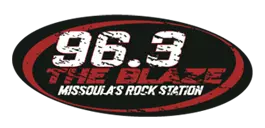
MRA officially adopts new Missoula workforce housing program
Martin Kidston
(Missoula Current) A pilot program that looks to boost the construction of workforce housing and direct revenue into the city's Affordable Housing Trust Fund was approved by the Missoula Redevelopment Agency's board of commissioners on Thursday.
The program, which has the backing of the Missoula City Council and began taking shape in August, takes advantage of new language in state law that qualifies workforce housing for tax increment financing.
In its basic form, the program offers a range of incentives to developers to help bring down the cost of construction and other expenses. The goal is to make housing more attainable for a greater number of residents.
“I've already received three interested projects, and I just received another one this morning,” said Annie Gorski, deputy director of MRA. “There is already some interest.”
State law permits cities to direct tax increment toward public infrastructure associated with private projects such as sidewalks, utilities and landscaping. It didn't, however, permit the city to direct tax increment into the project itself.
But that changed in 2021 when the Legislature added workforce housing to its definition of infrastructure. That was further clarified in 2023 when language was added to define workforce housing as serving families that earn between 60% and 140% of the area median income.
The AMI in Missoula County currently stands at around $86,000, according to federal guidelines.
Under the program, MRA can now invest tax increment to help offset the costs associated with construction, such as bridging funding gaps or offering an interest-rate reduction on a construction loan.
The acquisition of land within a trailer park, if deemed income eligible, may also qualify, Gorski said. The program will also require commercial businesses that receive tax increment to contribute 10% of the award to the Affordable Housing Trust Fund.
“We've gotten to what's a really good program,” said MRA board member Jack Lawson. “This will be challenging work going forward. But it's important work, and I'm glad we're doing it.”
While some have been critical of awarding tax increment to cover public infrastructure alongside private projects, it's those very projects that have made funding available within the city's urban renewal districts to now invest in workforce housing.
Without private investment, Gorski said the program wouldn't work. If the 10% give-back rule were in place in 2000, she said it would have funneled more than $5 million into the Affordable Housing Trust Fund by now.
“I found MRA's approach (to this program) to be comprehensive. It's a milestone and it puts Missoula in the forefront in using this legislation,” said Nancy Moe, a longtime MRA board member who has since retired.
The program will begin as a pilot effort for the first year. Next October, MRA will review the program and make any needed adjustments.




